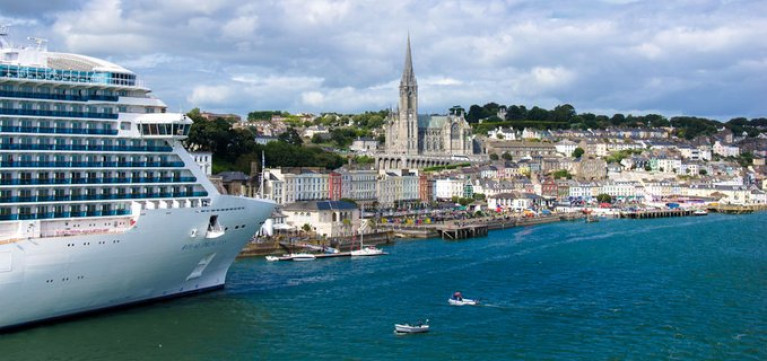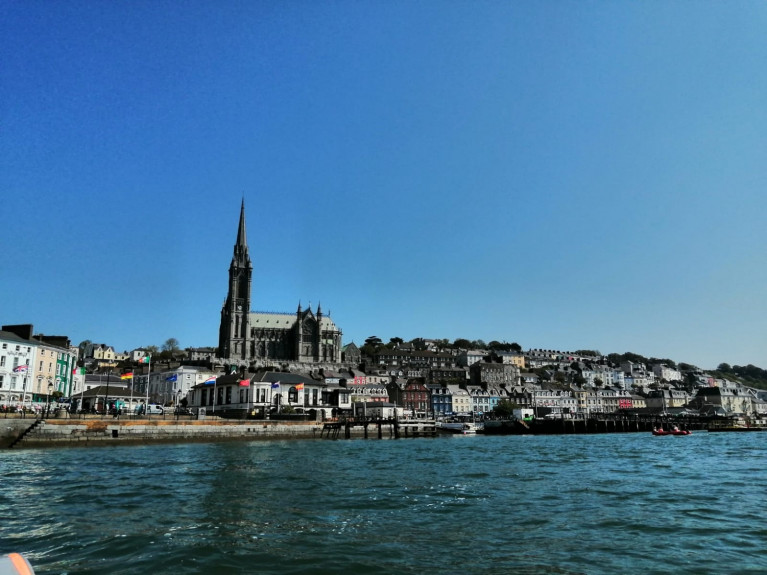Displaying items by tag: Cobh, Cork Harbour
Cruise Traffic in Cork Harbour Set to Hit Crest of a Wave Once More
Cruise liner visits to Cork Harbour is to make a major bounce-back with 88 calls already confirmed for next year and the likelihood there will be more.
Port of Cork chief commercial officer Conor Mowlds said a further 53 liners have pre-booked for visits in 2023 and this figure is expected to rise significantly in the months ahead.
“We're delighted with such a strong return,” Mr Mowlds said. “We expect the first vessel to arrive in April. Vessels are booked in for Cork and Bantry.”
The chairman of Cruise Europe, Cobh-based Captain Michael McCarthy, said he has been liaising with major cruise line companies and expects a far stronger return to the Irish market as many may have anticipated.
This will be especially good for Cobh, which relies heavily on the income generated from the arrival of cruise liner passengers.
The industry has been shut down in Ireland since the Covid-19 pandemic broke out. However, ports in Britain and Northern Ireland reopened earlier this year to cruise liner traffic.
Irish Examiner has more on this story.
Crew of Belgian Trawler Self-Isolating in Cobh Over Covid Concerns
In Cork Harbour, the master and crew of a Belgian-registered trawler are self-isolating on board the fishing vessel in Cobh (last night, 24 Aug) pending the outcome of Covid-19 testing.
As RTE News reports, the crew of the 'Vaya Con Diaz' were advised by the Marine Survey Office (MSO) that they could not unload their catch and to stay onboard after the trawler arrived into port (yesterday).
The MSO had been alerted by the Irish Naval Service after one of its vessels had encountered the trawler during routine fishery protection duties yesterday.
When the Navy announced their intention to board the vessel to carry out a routine inspection of the catch, and asked about the wellbeing of the crew, the master told them that there was a person on board with a cough and chest pains.
The Navy then deemed that the risk was too high to conduct a routine inspection.
More here on the story.
Club Med's Five-Mast Cruiseship Calls to Cobh
#ClubCorkCruise – Club Med 2 called to Cobh today where passengers from the impressive five-masted cruiseship visited the town's charming hillside location overlooking Cork Harbour and regional attractions, writes Jehan Ashmore.
The 14,000 tonnes ship completed in 1992 had sailed from the Isle of Scilly is operated by Club Med which was founded by Gérard Blitz who was a pioneer of the all-inclusive holiday company in 1950.
At 187m long the vessel with computer-controlled masts has a sail-surface area totalling 2,000sq, a ship of her appearance demonstrates a distinctive alternative and appeal to conventional cruiseships.
Tucked in between the second and third masts is the ship's slender funnel. At the top, uptakes are split in two and angled to deflect the fumes away from the masts above the eight-deck vessel.
Asides the usual passenger facilities, are sporting pursuits ranging from sailing, snorkelling, water-ski and windsurfing which are provided from the 'nautical hall' of the vessel located at the stern.
Accommodation are in cabins designed by Sophie Jacqmin, all with sea views for her 372 passengers who are looked after by 200 crew members.
The following cabin categories on board the French flagged vessel are designated as follows, Club Cabins, Deluxe Cabins or Suites, including Shipowners Suites which are located towards the bow of the vessel.
This teatime, the Club Med 2 is scheduled to depart, so what cruise-caller is next to call alongside the dedicated cruise berth. To find out check, the Port of Cork's website, by clicking HERE.
Royal Navy Attend Presidential Fleet Review for Cobh Titanic 100
#COBH TITANIC 100 - Following President Michael D. Higgins visit to Cobh to commemorate the centenary call of RMS Titanic to Queenstown, the town yesterday hosted a Naval Service review that included the Royal Navy's HMS Mersey.
The President as supreme commander of the Defence Forces boarded the Naval Service 'flagship' L.E. Eithne which passed the guest-ship, a River class patrol vessel which headed a line of vessels which lay at anchor of Cobh's waterfront, they were the L.E. Aoife, L.E. Aisling and L.E. Niamh
The historic event which marked the pinnacle of the Titanic 100 Cobh centenary week will continue as part of a year-round programme of events. For information visit www.titanic100.ie. On the homepage the L.E. Niamh features again, where on this occasion marine photographer Jehan Ashmore captured the vessel underway as she powered her way at high-speed through a misty Dalkey Sound.
Among the many places throughout Cobh where thousands of tourists have flocked since the Balmoral docked on Monday to retrace the liner's maiden voyage, has been the White Star Line pier.
From this pier were the last passengers to depart Queenstown on board the tenders PS Ireland and PS America to the ill-fated Titanic that struck an ice-berg. On her Irish call 123 passengers were transferred to the Titanic which lay outside Cork Harbour, while 7 passengers disembarked from the liner and headed ashore.
What remains of the pier which is not accessible to the public and is in danger of collapsing, there has been calls to raise funds to save the structure, as previously reported.
Also in attendance during yesterday's historic proceedings, was the excursion passenger tender Spirit if the Isles which is operating on her second season since starting Cork Harbour cruises last year. They run between Cork city quays and downriver along the Lee to Cobh.
In the 1980's the tender then named Ingot ran excursions from Dun Laoghaire Harbour into Dublin Bay and likewise of L.E. Niamh, she too transited Dalkey Sound as part of her sightseeing tours.
- RMS Titanic
- White Star Line
- Cobh Cruise Callers
- Cobh, Cork Harbour
- Cruiseships
- Balmoral
- FredOlsen Cruise Lines
- Titanic Memorial Cruise
- naval service
- LEEithne
- Royal Navy
- HMS Mersey
- President Michael D Higgins
- Queenstown,Ireland
- PS Ireland
- PS America
- Spirit of the Isles
- Cork Harbour Cruises
- Cork Harbour News
- Dalkey Sound
- LE Niamh
- LE Aoife
- LE Aisling
- Cork Harbour
- River Class Patrol vessels
- River Lee
- Irish marine photographers


































































